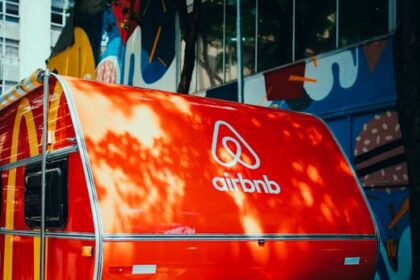On-Page SEO Fundamentals are the bedrock of organic search visibility, encompassing all optimization efforts performed directly on the website itself. Unlike off-page SEO, which deals with external signals like backlinks, on-page SEO focuses on enhancing the content, HTML, and overall user experience elements visible to both users and search engine crawlers. The primary goal is to signal to search engines that a page is relevant, valuable, and authoritative for specific search queries, thereby improving its ranking potential and attracting organic traffic. This detailed exploration delves into the core components, strategies, and nuances required to master on-page optimization.
I. Strategic Keyword Research and Intent Alignment
Effective on-page SEO begins long before content creation, with meticulous keyword research. This foundational step identifies the terms and phrases your target audience uses when searching for information, products, or services relevant to your website. It’s not just about finding high-volume keywords, but understanding the intent behind them.
1. Understanding Search Intent:
Search intent is the “why” behind a user’s search query. Google’s algorithms are increasingly sophisticated at discerning intent, prioritizing results that best satisfy the user’s underlying need. Failing to align your content with search intent can lead to high bounce rates and poor rankings, even if your keywords are technically present.
- Informational Intent: Users seeking answers, “how-to” guides, definitions, or general knowledge (e.g., “how does SEO work,” “what is on-page SEO”). Content should be comprehensive articles, guides, blog posts.
- Navigational Intent: Users looking for a specific website or page (e.g., “Google Maps,” “Amazon login”). Content is typically a homepage or a specific internal page.
- Commercial Investigation Intent: Users researching a product or service before making a purchase, comparing options, or reading reviews (e.g., “best laptops for gaming,” “SEO tools comparison”). Content should be reviews, comparisons, buying guides.
- Transactional Intent: Users ready to make a purchase or complete an action (e.g., “buy SEO software,” “cheap flights to London”). Content is product pages, service pages, e-commerce listings.
2. Types of Keywords:
A robust keyword strategy incorporates a mix of keyword types.
- Short-Tail Keywords (Head Terms): Broad, highly competitive terms, typically 1-2 words (e.g., “SEO,” “marketing”). They attract high search volume but often have ambiguous intent.
- Long-Tail Keywords: More specific, longer phrases, usually 3+ words (e.g., “on-page SEO fundamentals guide for beginners,” “best digital marketing tools 2024”). They have lower search volume individually but collectively drive significant, highly qualified traffic due to clear intent. They are less competitive and often convert better.
- LSI Keywords (Latent Semantic Indexing): Not directly synonyms, but contextually related terms that help search engines understand the broader topic of your content. For “cars,” LSI keywords might include “automobiles,” “vehicles,” “driving,” “transportation.” Google uses these to gauge content comprehensiveness and relevance.
- Semantic Keywords: Similar to LSI, these are terms and phrases that are conceptually related to your main topic, even if they don’t explicitly contain the target keyword. They help build topical authority. For “coffee,” semantic terms could be “espresso,” “caffeine,” “brew,” “barista,” “bean roast.”
3. Keyword Research Tools and Techniques:
Utilize a combination of tools for comprehensive keyword analysis.
- Google Keyword Planner: Free tool from Google, excellent for initial ideas, search volume estimates, and competition levels.
- SEMrush, Ahrefs, Moz Keyword Explorer: Premium tools offering in-depth competitive analysis, organic keyword discovery, keyword difficulty scores, and content gap analysis.
- AnswerThePublic/AlsoAsked: Visualize questions and prepositions related to your keywords, excellent for identifying informational intent queries and content ideas.
- Google Search Console: Identifies keywords your site already ranks for and those that are generating impressions but not clicks, indicating opportunities for optimization.
- Google Autocomplete & “People Also Ask” (PAA): Provides insights into popular related queries and common questions users are asking.
- Competitor Analysis: Analyze competitor websites that rank well for your target keywords. Identify their keyword strategy, content structure, and content gaps you can fill.
4. Keyword Mapping:
Once you have a list of targeted keywords, map them to specific pages on your website. Avoid keyword cannibalization, where multiple pages compete for the same keyword, confusing search engines and diluting your ranking power. Each page should ideally target a primary keyword and several related secondary or LSI keywords.
II. High-Quality Content Optimization
Content is the heart of on-page SEO. Without valuable, well-structured, and comprehensive content, even the most technically optimized page will struggle to rank.
1. Content Quality and Value:
Google’s primary directive is to provide the best possible results to its users. Therefore, content must be:
- Comprehensive: Cover the topic thoroughly, addressing all common questions and related sub-topics.
- Accurate and Factual: Ensure all information is correct and verifiable.
- Original: Avoid duplicate content. Offer a unique perspective or deeper insights.
- Actionable: Provide practical advice, steps, or solutions where applicable.
- Engaging: Keep readers hooked with clear, concise language, storytelling, and compelling visuals.
2. Keyword Placement and Density (Natural Integration):
Strategic, natural integration of keywords is crucial. Avoid keyword stuffing, which is detrimental to user experience and can lead to penalties.
- Primary Keyword: Include your main keyword in the:
- Page Title (ideally at the beginning)
- Meta Description
- H1 Heading
- First 100-150 words of the content
- Throughout the body text naturally (don’t force it)
- In at least one subheading (H2, H3)
- Image Alt Text and file names
- URL
- Secondary/LSI Keywords: Sprinkle these naturally throughout the body content to provide context and demonstrate topical depth.
- Keyword Density: There’s no magic number. Focus on natural language. If your content genuinely addresses the topic, keywords will appear organically. Over-optimizing by forcing a high density can harm readability.
3. Content Depth and Comprehensiveness:
Longer, more detailed content often performs better, provided it remains high-quality and relevant. Longer content allows for:
- Exploration of Sub-topics: Covering a wide array of related questions and concepts.
- In-depth Explanations: Providing thorough answers and detailed examples.
- Inclusion of More Keywords: Naturally incorporating more long-tail and LSI keywords.
- Higher Dwell Time: Users spend more time on comprehensive pages, signaling quality to Google.
4. Readability and User Experience (UX):
Even the most informative content will fail if it’s difficult to read. Optimize for user experience:
- Short Paragraphs: Break up large blocks of text.
- Subheadings (H2, H3, etc.): Organize content logically, making it scannable and digestible.
- Bullet Points and Numbered Lists: Present information clearly and concisely.
- Bold and Italic Text: Highlight key takeaways and important phrases.
- White Space: Ensures the page doesn’t look cluttered.
- Clear and Concise Language: Avoid jargon where possible, or explain it clearly. Write for your audience’s understanding.
- Font Choice and Size: Ensure legibility across devices.
- Grammar and Spelling: Errors undermine credibility.
5. E-A-T (Expertise, Authoritativeness, Trustworthiness):
Crucial for YMYL (Your Money Your Life) topics (health, finance, legal, safety), but increasingly important across all niches. Demonstrate E-A-T by:
- Expertise: Showcase the author’s credentials, experience, or knowledge on the topic. Link to author bios.
- Authoritativeness: Earn mentions and links from other authoritative sites. Be cited as a source.
- Trustworthiness: Provide clear contact information, privacy policy, terms of service. Secure your site with HTTPS. Include factual references and citations where appropriate.
6. Content Freshness and Updates:
Search engines favor fresh, up-to-date content, especially for rapidly evolving topics.
- Regular Audits: Periodically review existing content for accuracy and relevance.
- Content Refreshing: Update statistics, add new sections, incorporate new insights, or restructure content to improve clarity. Even changing the publication date can sometimes signal freshness.
- Evergreen Content: While some content is timeless, even evergreen pieces can benefit from minor updates to remain current.
7. Visual Content Optimization:
Images, videos, and infographics enhance user engagement and can be optimized for SEO.
- Relevant Visuals: Use visuals that genuinely add value and illustrate your points.
- Image File Names: Use descriptive, keyword-rich file names (e.g.,
on-page-seo-checklist.jpginstead ofIMG_1234.jpg). - Image Alt Text: Provide descriptive alt text for accessibility and SEO. Describe the image content using relevant keywords naturally (e.g.,
alt="Detailed checklist for on-page SEO fundamentals"). This is critical for screen readers and when images fail to load. - Image Compression: Compress images to reduce file size without sacrificing quality, improving page load speed.
- Responsive Images: Ensure images scale correctly across different devices.
- Video Optimization: Embed videos from platforms like YouTube. Optimize video titles, descriptions, and tags on the hosting platform. Consider adding transcripts for accessibility and keyword visibility.
III. HTML Elements Optimization
HTML elements provide critical signals to search engines about your page’s content and structure. Optimizing these elements is fundamental to on-page SEO.
1. Title Tags (
The title tag is arguably the most important on-page SEO element. It appears in the browser tab and as the clickable headline in search engine results pages (SERPs).
- Purpose: Summarizes the page’s content for users and search engines.
- Best Practices:
- Primary Keyword Inclusion: Place your target keyword close to the beginning of the title.
- Conciseness & Clarity: Be descriptive and to the point.
- Character Limit: Aim for 50-60 characters (around 512 pixels) to prevent truncation in SERPs. Longer titles might be displayed, but typically only the first 60 characters are fully visible.
- Uniqueness: Every page on your site should have a unique title tag.
- Brand Name: Include your brand name, usually at the end, separated by a pipe
|or hyphen-. - Avoid Keyword Stuffing: Don’t stuff multiple keywords into the title; it looks spammy.
- Compelling Language: Make it enticing for users to click.
- Reflect Content: Ensure the title accurately reflects the page’s content to avoid misleading users.
2. Meta Descriptions ():
The meta description is a brief summary of the page’s content that often appears below the title in SERP snippets. While not a direct ranking factor, a well-crafted meta description significantly impacts click-through rates (CTR).
- Purpose: Entice users to click on your listing by providing a compelling summary.
- Best Practices:
- Compelling Summary: Write a concise, engaging summary of the page’s content.
- Keyword Inclusion: Include your primary keyword naturally, as Google often bolds the searcher’s query if it appears in the description.
- Call-to-Action (CTA): Encourage clicks with action-oriented language (e.g., “Learn more,” “Discover now,” “Get your free guide”).
- Character Limit: Aim for 150-160 characters (around 920 pixels) to avoid truncation. Mobile devices often show fewer characters.
- Uniqueness: Each page should have a unique meta description.
- Value Proposition: Highlight what makes your page unique or valuable.
- Don’t Duplicate Title: The meta description should complement, not repeat, the title tag.
3. Header Tags (H1-H6):
Header tags (H1, H2, H3, etc.) provide structure and hierarchy to your content, making it easier for both users and search engines to understand the page’s organization and key topics.
- H1 Tag: The main heading of your page. There should only be one H1 tag per page.
- Purpose: Indicates the main topic of the page.
- Best Practices:
- Contains the primary target keyword.
- Should be highly descriptive of the page’s overall content.
- Visually prominent.
- H2-H6 Tags: Subheadings that break down the H1’s topic into sub-sections.
- Purpose: Organize content logically, improve readability, and signal sub-topics.
- Best Practices:
- Use them hierarchically (H2 for major sections, H3 for subsections within H2, and so on).
- Include secondary and LSI keywords naturally within relevant subheadings.
- Improve scannability, allowing users to quickly grasp the content structure.
- Act as a table of contents for search engines.
4. URL Structure:
A well-optimized URL is clean, descriptive, and user-friendly.
- Purpose: Provides a clear indication of the page’s content to users and search engines.
- Best Practices:
- Short and Concise: Avoid overly long URLs.
- Keyword Inclusion: Incorporate your primary keyword naturally.
- Readability: Make it easy to read and understand. Use hyphens
-to separate words, not underscores_. - Static: Avoid dynamic URLs with long strings of parameters (e.g.,
?id=123&cat=456). - Logical Hierarchy: Reflect your site’s structure (e.g.,
yourdomain.com/category/subcategory/page-name). - HTTPS: Ensure your site uses HTTPS for security and SEO benefits.
- Canonicalization: Use canonical tags to indicate the preferred version of a URL if duplicate content exists across different URLs.
5. Image Alt Text and File Names:
As discussed in the content section, these are critical for accessibility and search engine understanding of visual content.
- Alt Text: Describes the image for visually impaired users and search engine crawlers. Should be descriptive and include keywords naturally.
- File Names: Use descriptive names with keywords, separating words with hyphens (e.g.,
blue-widget-product-shot.jpg).
6. Schema Markup (Structured Data):
Schema markup is a form of microdata that you can add to your website’s HTML to help search engines better understand the content on your pages. This can lead to rich snippets in SERPs, which enhance visibility and CTR.
- Purpose: Provides context to search engines about the type of content on your page (e.g., recipe, review, event, product, FAQ).
- Benefits:
- Rich Snippets: Can result in visually enhanced search results, such as star ratings, review counts, product prices, event dates, or recipe details.
- Enhanced Visibility: Rich snippets stand out in SERPs, increasing organic CTR.
- Contextual Understanding: Helps search engines categorize and present your content more effectively.
- Common Schema Types:
- Article: For blog posts and news articles.
- Product: For e-commerce product pages (price, availability, reviews).
- Review: For reviews of products, services, or places.
- LocalBusiness: For local businesses (address, phone, hours).
- FAQPage: For pages with frequently asked questions and answers.
- Recipe: For cooking recipes (ingredients, cooking time, ratings).
- Event: For event listings (date, time, location).
- Organization: For company information (logo, social profiles).
- Implementation:
- Use JSON-LD (JavaScript Object Notation for Linked Data) within the
orof your HTML. - Utilize tools like Google’s Structured Data Markup Helper or Schema.org’s official documentation.
- Test your implementation using Google’s Rich Results Test tool.
- Use JSON-LD (JavaScript Object Notation for Linked Data) within the
IV. Internal Linking Strategy
Internal links are hyperlinks that point to other pages within the same domain. They are crucial for both user navigation and SEO.
1. Importance of Internal Linking:
- Crawlability: Help search engine crawlers discover and index all pages on your site. If a page isn’t linked, it’s an “orphan page” and difficult for search engines to find.
- PageRank (Link Equity) Distribution: Internal links pass “link juice” or authority from stronger pages to weaker ones, boosting their ranking potential.
- User Experience (UX): Guide users through your website, helping them find related content and information. This increases time on site and reduces bounce rate.
- Contextual Relevance: Anchor text used in internal links provides context to search engines about the linked page’s content.
2. Anchor Text Optimization:
The visible, clickable text of a hyperlink is called anchor text.
- Descriptive and Relevant: Use anchor text that accurately describes the content of the linked page.
- Keyword-Rich (Naturally): Incorporate keywords relevant to the linked page, but avoid exact-match keyword stuffing. Vary your anchor text.
- Avoid Generic Phrases: Do not use “click here,” “read more,” or “learn more” as anchor text.
- Contextual: Place links within the natural flow of your content where they add value.
3. Contextual Linking:
Place internal links within the body of your content where they naturally fit and enhance the user’s understanding of the topic or offer further relevant information.
4. Site Structure and Pillar Pages:
A strong internal linking strategy often revolves around a pillar page (or content hub) model.
- Pillar Pages: Comprehensive, high-level pages covering a broad topic. They link out to several in-depth cluster content pages.
- Cluster Content: More specific articles that delve into sub-topics of the pillar page. These pages link back to the pillar page, reinforcing its authority.
- This structure helps establish topical authority and ensures a logical flow of information and link equity.
5. Avoiding Orphan Pages:
Ensure every page on your site is linked to from at least one other page. Use tools like Screaming Frog or your site audit tool to identify and fix orphan pages.
V. External Linking (Outbound Links)
External links point from your website to another website. While less direct than internal links, they play a role in demonstrating trustworthiness and providing value.
1. When and Why to Use Them:
- Credibility and Trust: Linking to authoritative, relevant external sources demonstrates that your content is well-researched and credible. Google rewards sites that cite their sources.
- Enhanced Value: Provide additional resources or deeper information for your users.
- Establishing Relationships: Can sometimes lead to reciprocal links or mentions from the sites you link to.
2. Linking to Authoritative Sources:
Always link to high-quality, reputable websites (e.g., academic institutions, official organizations, well-known industry leaders). Avoid linking to spammy or low-quality sites.
3. rel="nofollow", rel="sponsored", rel="ugc" Attributes:
These attributes are used to tell search engines how to treat a particular link:
rel="nofollow": Used when you don’t want to pass link equity (PageRank) to the linked page, or when you don’t want to endorse the linked page (e.g., links in comments, user-generated content, or sponsored content before the introduction of specific attributes).rel="sponsored": Used for links that are part of advertisements or paid placements.rel="ugc"(User Generated Content): Used for links within user-generated content, such as forum posts or comments.- It’s generally recommended to use
target="_blank"for external links so they open in a new tab, preventing users from leaving your site immediately.
VI. Site Speed Optimization (Client-Side Focus)
Page load speed is a critical factor for user experience and a direct ranking signal for Google. While server-side optimizations (hosting, CDN) are crucial, many on-page elements affect speed.
1. Impact on UX and Rankings:
- User Experience: Faster pages lead to happier users, lower bounce rates, and higher engagement.
- Conversion Rates: Studies show that even a 1-second delay in page response can lead to a significant drop in conversions.
- SEO: Google explicitly uses page speed as a ranking factor, especially for mobile-first indexing.
2. Tools for Testing Site Speed:
- Google PageSpeed Insights: Provides a comprehensive report with scores for both mobile and desktop, along with actionable recommendations.
- GTmetrix: Offers detailed reports on page speed, including waterfall charts and performance grades.
- Pingdom Tools: Analyzes load time, page size, and requests, identifying bottlenecks.
- WebPageTest: Allows for testing from different locations and browsers, providing deep diagnostic information.
3. Client-Side On-Page Optimizations:
- Image Optimization:
- Compression: Use tools like TinyPNG or Imagify to compress images without noticeable quality loss.
- Lazy Loading: Defer loading of images (and videos) that are below the fold until the user scrolls them into view.
- Responsive Images: Serve images in optimal sizes for different devices.
- Next-Gen Formats: Convert images to modern formats like WebP or AVIF, which offer superior compression.
- Minify CSS, JavaScript, and HTML: Remove unnecessary characters (whitespace, comments) from code files without altering functionality. This reduces file size and network load.
- Eliminate Render-Blocking Resources: Identify and defer or asynchronously load JavaScript and CSS that prevent your page from rendering quickly.
- Leverage Browser Caching: Instruct browsers to store static resources (images, CSS, JS) locally, so repeat visitors load pages faster.
- Reduce Server Response Time: While primarily a server-side issue, efficient database queries and optimized code on your end can contribute.
- Reduce Redirects: Too many redirects create additional HTTP requests and slow down load times.
- Optimize Font Delivery: Host fonts locally if possible, or use
font-display: swapto prevent text from being invisible during font loading. - Clean Code: Ensure your HTML, CSS, and JavaScript are well-written and free of bloat.
VII. Mobile-Friendliness
With mobile-first indexing, Google primarily uses the mobile version of your content for indexing and ranking. A responsive and user-friendly mobile experience is no longer optional.
1. Mobile-First Indexing:
Google predominantly crawls and indexes the mobile version of websites. If your mobile site is poorly optimized or lacks content present on your desktop version, it will negatively impact your rankings.
2. Responsive Design:
The gold standard for mobile-friendliness. Responsive design ensures your website adapts its layout and content seamlessly to any screen size (desktop, tablet, mobile) using a single URL and codebase.
3. Key Mobile Optimization Elements:
- Legible Text: Ensure font sizes are large enough to read without zooming.
- Appropriate Spacing: Provide enough space between clickable elements (buttons, links) to prevent accidental taps. Google calls this “touch target optimization.”
- No Horizontal Scrolling: Content should fit within the screen width without requiring horizontal scrolling.
- Fast Load Times: Crucial for mobile users, who are often on slower connections.
- No Intrusive Interstitials: Avoid pop-ups or full-screen overlays that block content on mobile devices, especially upon entry.
- Viewport Configuration: Ensure your HTML includes a
tag to correctly render content on mobile devices. - Mobile-Specific Navigation: Streamlined menus (e.g., hamburger menus) are often necessary for mobile.
4. Testing Mobile-Friendliness:
Use Google’s Mobile-Friendly Test tool to assess your page’s responsiveness and identify issues.
VIII. User Experience (UX) and Engagement Signals
Beyond technical optimizations, on-page SEO increasingly relies on direct and indirect user engagement signals. Google aims to rank pages that provide the best user experience.
1. Dwell Time and Bounce Rate:
- Dwell Time: The amount of time a user spends on your page after clicking on it from SERPs before returning to the search results. Longer dwell times generally signal higher satisfaction and relevance.
- Bounce Rate: The percentage of visitors who land on a page and then leave without interacting further or visiting other pages on the site. A high bounce rate can indicate poor content relevance or UX.
- Optimization: Create compelling, engaging content that addresses user intent. Ensure easy navigation and clear calls to action.
2. Click-Through Rate (CTR):
The percentage of people who click on your search listing out of the total impressions it receives. While partly influenced by external factors (brand recognition), on-page elements play a huge role.
- Optimization:
- Compelling Title Tags: Craft titles that accurately reflect content and spark curiosity.
- Enticing Meta Descriptions: Use persuasive language and CTAs.
- Schema Markup: Rich snippets often lead to higher CTR due to increased visual appeal.
3. Core Web Vitals:
A set of real-world, user-centric metrics that measure key aspects of web page performance and user experience. They are direct ranking signals.
- Largest Contentful Paint (LCP): Measures perceived load speed. It marks the point when the page’s main content has likely loaded.
- Goal: LCP should occur within 2.5 seconds of when the page first starts loading.
- Optimization Strategies: Optimize server response time, reduce render-blocking resources (CSS, JS), optimize images (compression, lazy load), preconnect to important third-party origins.
- First Input Delay (FID): Measures interactivity. It quantifies the time from when a user first interacts with a page (e.g., clicks a button, taps a link) to when the browser is actually able to respond to that interaction.
- Goal: FID should be 100 milliseconds or less.
- Optimization Strategies: Break up long JavaScript tasks, optimize third-party script execution, reduce JavaScript execution time.
- Cumulative Layout Shift (CLS): Measures visual stability. It quantifies the amount of unexpected layout shift of visual page content.
- Goal: CLS should be 0.1 or less.
- Optimization Strategies: Specify dimensions for images and video elements, ensure ads and embeds have reserved space, avoid inserting content dynamically above existing content, use CSS transform properties for animations instead of properties that trigger layout changes.
4. Overall User Experience Design:
- Intuitive Navigation: Clear menus, breadcrumbs, and internal links help users find what they need.
- Visual Appeal: An aesthetically pleasing design with a consistent brand identity.
- Interactive Elements: Forms, calculators, quizzes, or interactive tools can increase engagement.
- Accessibility: Design for all users, including those with disabilities. Use proper alt text, sufficient color contrast, and keyboard navigation support.
IX. Advanced On-Page Techniques
Mastering the fundamentals is key, but some advanced techniques can further refine your on-page SEO strategy.
1. Content Cannibalization Prevention and Resolution:
Content cannibalization occurs when two or more pages on your website target and rank for the same or very similar keywords. This confuses search engines and can lead to neither page ranking well.
- Prevention: Conduct thorough keyword research and mapping to ensure each page targets a unique primary keyword and intent.
- Resolution:
- Consolidate: Merge the content from multiple competing pages into one comprehensive, authoritative page. Redirect the old URLs to the new one.
- De-optimize: Adjust the keyword targeting of one page to focus on a different, related keyword.
- Canonicalize: Use canonical tags to tell search engines which version of duplicate content is the preferred one.
- Noindex: If a page offers little value and you don’t want it indexed, use a noindex tag.
- Internal Link Strategy: Adjust internal links to point primarily to the preferred page for a given keyword.
2. Content Pruning (Auditing and Removing Low-Quality Content):
Regularly auditing your content and removing or improving low-quality, outdated, or underperforming pages can positively impact overall site authority.
- Identify Low-Value Pages: Look for pages with low traffic, high bounce rates, thin content, or outdated information.
- Actionable Steps:
- Update and Improve: If the topic is still relevant, significantly enhance the content (add depth, fresh data, visuals).
- Consolidate: Merge thin pages into a more substantial piece of content.
- Redirect: If a page is no longer relevant, 301 redirect it to a relevant, high-quality page.
- Noindex/Remove: If a page serves no purpose for users or search engines, consider noindexing it or removing it entirely (and redirecting if it has any external links).
3. Topical Authority and Content Clusters/Hubs:
Instead of optimizing individual pages in isolation, focus on establishing topical authority around broader subjects.
- Pillar Pages/Topic Clusters: Create comprehensive pillar pages on broad topics that link to numerous in-depth “cluster content” articles on sub-topics. These cluster articles then link back to the pillar page. This structure demonstrates comprehensive coverage and expertise in a specific domain to search engines.
- Benefits: Improves overall site authority, provides clear navigation for users, and helps search engines understand the relationships between your content pieces.
4. Local SEO On-Page Elements:
For businesses serving a local audience, specific on-page optimizations are crucial.
- NAP (Name, Address, Phone Number): Consistent NAP information prominently displayed on relevant pages (contact page, footer, location pages).
- Location Pages: Dedicated pages for each physical business location, optimized with local keywords, NAP, specific services, testimonials, and maps.
- Schema Markup (LocalBusiness): Implement LocalBusiness schema to provide structured data about your business to search engines.
- Local Keywords: Integrate city, state, or neighborhood names into your content, title tags, meta descriptions, and header tags where relevant (e.g., “Best Italian Restaurant in [City Name]”).
5. Voice Search Optimization:
As voice search proliferates, optimize your content for conversational queries.
- Conversational Language: Write content in a natural, conversational tone.
- Answer Questions Directly: Structure content to directly answer common questions (“who,” “what,” “where,” “when,” “why,” “how”).
- Long-Tail Keywords: Voice queries tend to be longer and more specific, aligning with long-tail keyword strategies.
- FAQ Sections: Include explicit FAQ sections that answer common questions directly.
6. Featured Snippets Optimization (Position Zero):
Featured snippets are selected search results that appear at the very top of Google’s search results, above the traditional organic listings.
- Types: Paragraph, List, Table, Video.
- Optimization Strategies:
- Direct Answers: Provide concise, direct answers to common questions immediately following an H2 or H3 heading that poses the question.
- Structured Content: Use bullet points, numbered lists, and tables effectively.
- Q&A Format: Create dedicated Q&A sections on your page.
- Concise Summaries: Ensure your content has easily extractable definitions or summaries.
- Clarity: Write in clear, straightforward language.
On-Page SEO is an ongoing process that requires continuous monitoring, analysis, and refinement. It’s a blend of technical precision, content creation artistry, and user experience psychology. By meticulously optimizing each fundamental element, website owners can significantly improve their search engine rankings, attract relevant organic traffic, and ultimately achieve their digital marketing objectives. Staying abreast of algorithm updates and evolving best practices is paramount to long-term success in the dynamic landscape of search engine optimization.











